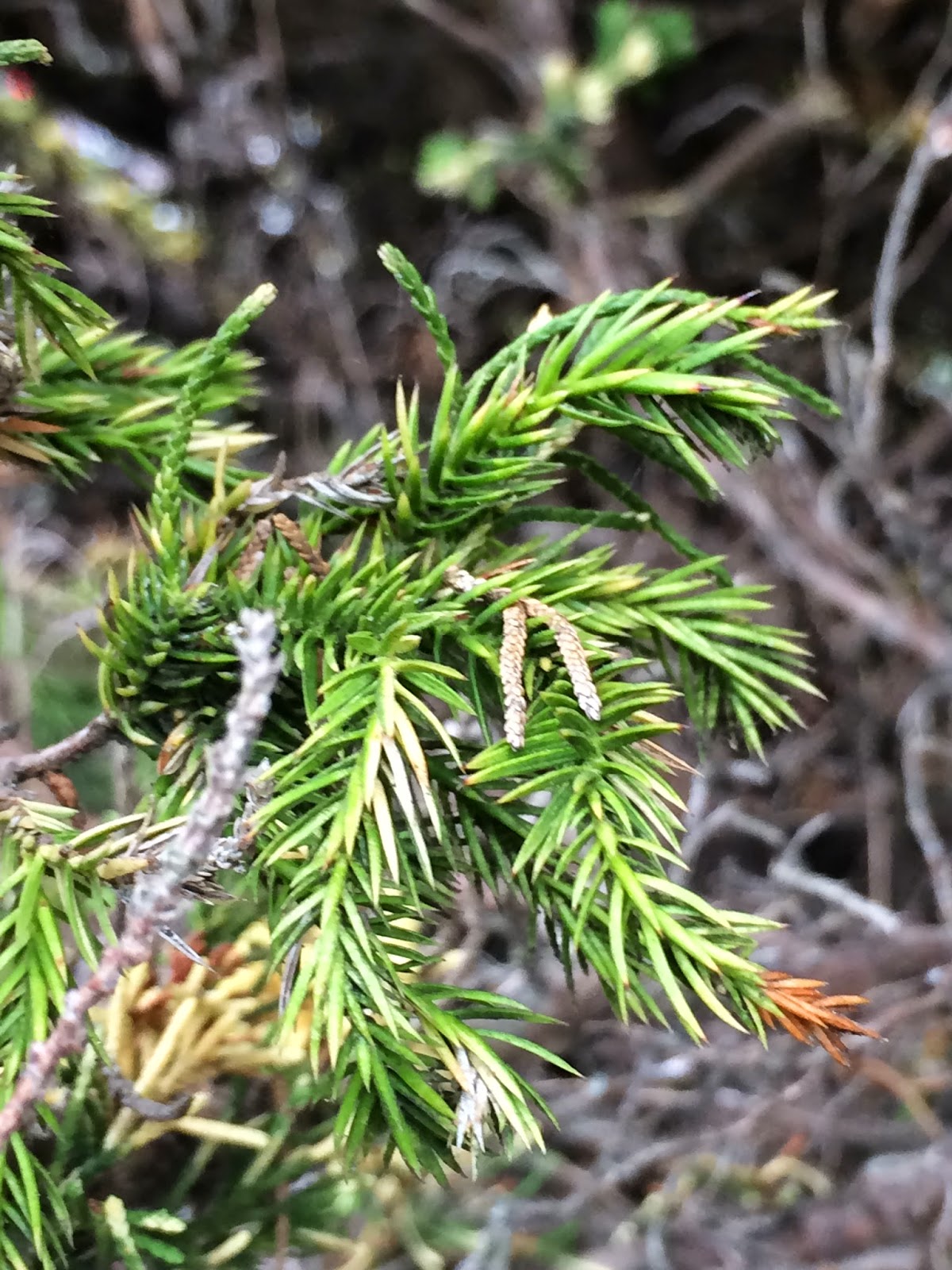The Variegated Kaizuka Juniper or sometimes called the Variegated Hollywood Juniper is an uncommon sight in SC county, with only a few registering in my travels. Growing slowly to 15' with a spread of 10', the plants are very much tighter than the green hollywood juniper and lack the wide spreading branches, though the branches do twist. Grown for its splashes of cream foliage, it makes a nice specimen.
Evergreen leaves are spirally arranged, scale like, very small with juvenile awl-shaped leaves thrown in. The cream areas lack chlorophyll completely and provide no help in growth, but look cool.
Juvenile foliage awl-shaped and some lacking chlorophyll.
Quite frequently the cream foliage dies in summer heat.
Also known a Juniperus chinensis 'Torulosa Variegata'
Misidentification:
Not sure
Location:
Aptos
Corner of Soquel Dr and State Park in the parking strip of the Church, across from the Safeway gas station.
706 Clubhouse Dr.
Capitola
102 Grand Ave
























































